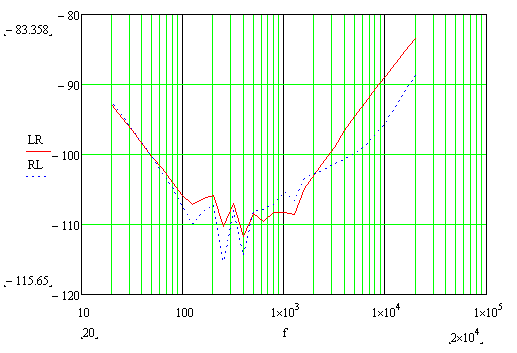
Here are a number of measurements we made on the GT-101. The GT-102 measurements are even better, particularly in the area of noise. We'll post them at some point in the near future.
The crosstalk is below 80 dB for all frequencies less than 20 kHz. The measurements show both left to right and right to left crosstalk.

The next measurements show 1 kHz THD+N measurements as a function of output power across an 8 Ohm load. Note the clipping occurs around 63 watts. Both left and right channel measurements are shown. One channel was driven at a time for these measurements. The nice in THD+N at low output power levels is the usual rise that happens at low levels as a fixed amount of noise becomes a greater percentage of the THD+N as power drops.
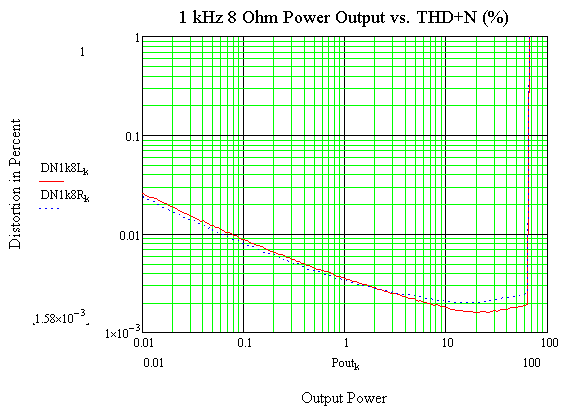
The next set of measurements is for 1 kHz 4 Ohm power versus THD+N. The GT-101, at 1 kHz, with a single channel driven, will put out more than 100 Watts in that channel, into a 4 Ohm load.
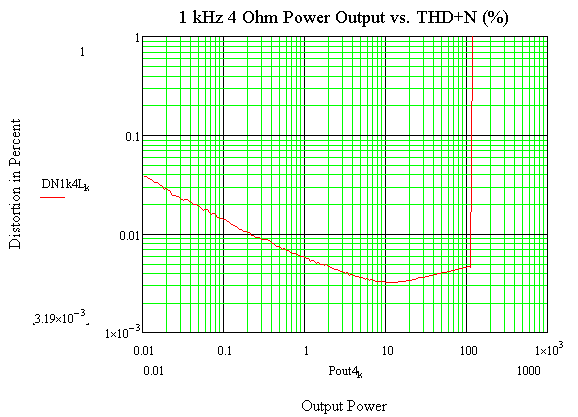
The 4-Ohm power per channel (tests made with a single channel driven) drops a bit at the lowest frequencies, for example, 20 Hz. The following graph shows the output THD+N versus output power for a single channel driven into a 4 Ohm load, at frequencies of 100, 50, 35, and 20 Hz. Even at 20 Hz, the 4-Ohm power exceeds 90 Watts with a single channel driven.
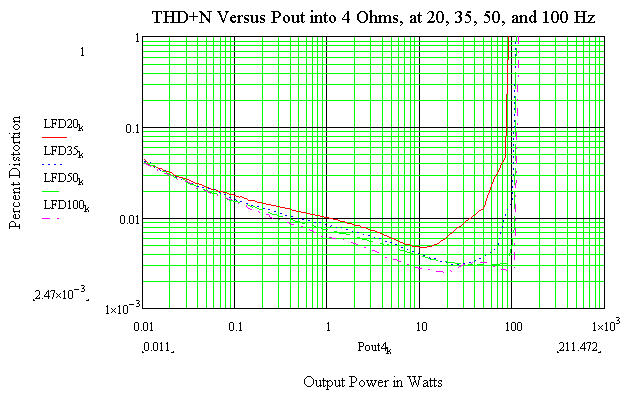
Some people like to look at 20 kHz distortion as an indicator of the overall goodness of the design. Here's a plot of THD+N at 20 kHz, single channel driven, into a 4 Ohm load.
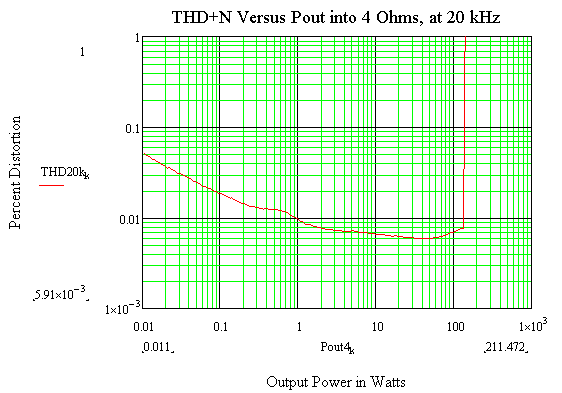
It's also handy to get a look at the spectrum of the harmonics. The following graphs show the harmonics of a 1 kHz fundamental. They are shown in dB relative to 53 Watts into 8 Ohms.Note that the largest harmonic, the 3rd, is almost 100 dB below the fundamental. The remaining harmonics are typically more than 120 dB below the fundamental.
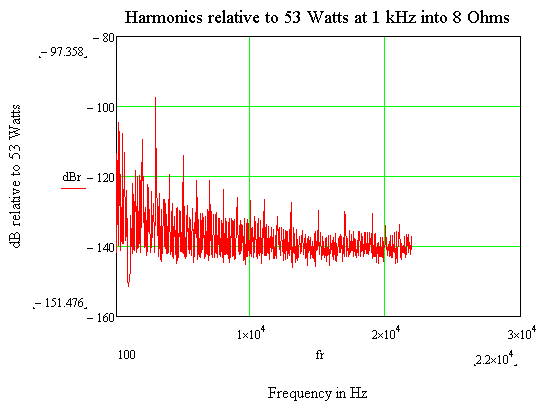
The last graph shows the harmonics, this time, with reference to 53 milliwatts. Note how low they are, more than 100 dB below the fundamental, meaning that the amp sounds great at both low and high levels.
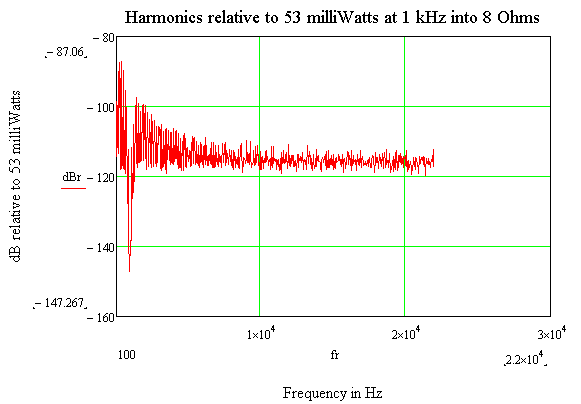
I guess that subjective tests really don't have a place on a page called measured performance, but let me just say that I've been enjoying listening to GT-101's driving a pair of Dynaco A-25's. Just the other day, I was listening to some live recordings (in a darkened room) of the Basie Band from 1959. Being a live recording, it exhibits some of the best and the worst of recording technique. Some things on the original recording (and the CD) are a bit overmodulated and distorted. Other things sound so real, you'd swear the bass drum in the trap set was in the room with you!